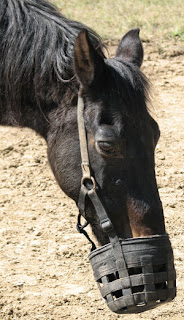A rafter of turkeys
We had a rare treat the other morning - We looked out in the horse field and there was a large flock (sometimes known as a rafter) of wild turkeys walking across to the woods. The weather has been very wet and, although I’m not 100 percent sure, I believe that they, like some other birds, enjoy the rain and wet soil to bring out insects and worms. We counted 36, four times the most we’ve ever seen on once.

I've written about wild turkeys on our farm before, but it was especially mesmerizing to watch this rafter … they walked calmly across the field for the most part, looking around, picking at the ground, but occasionally one would get excited and run ahead, then several others would join in. I felt like I was seeing something very old … almost as if I were looking at a group of dinosaurs instead of birds.

I've written about wild turkeys on our farm before, but it was especially mesmerizing to watch this rafter … they walked calmly across the field for the most part, looking around, picking at the ground, but occasionally one would get excited and run ahead, then several others would join in. I felt like I was seeing something very old … almost as if I were looking at a group of dinosaurs instead of birds.








